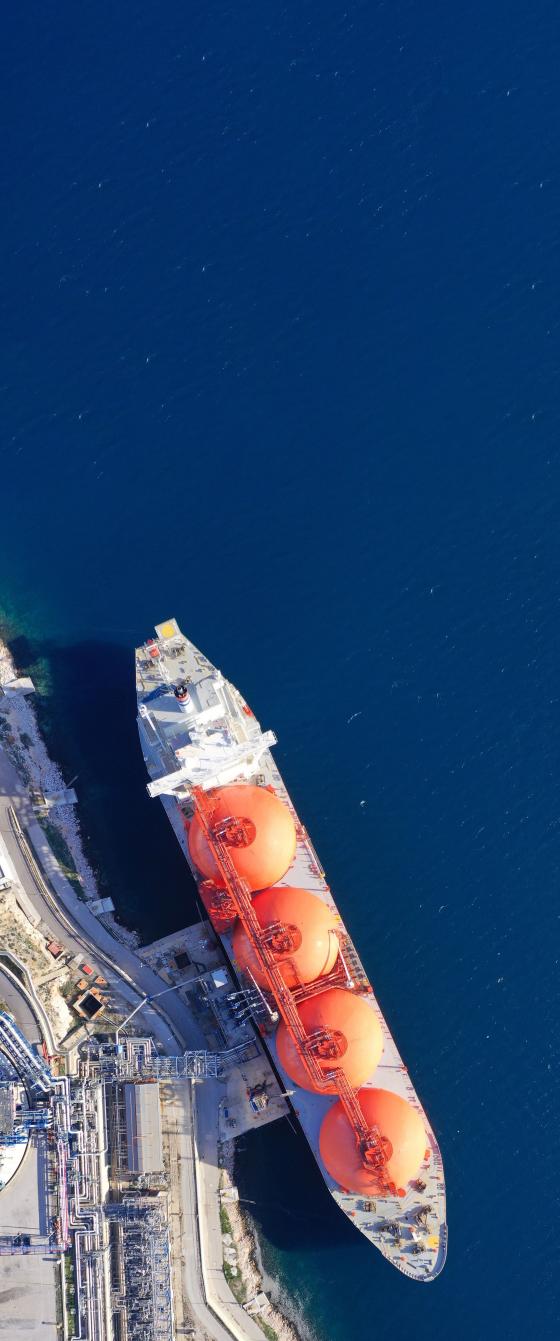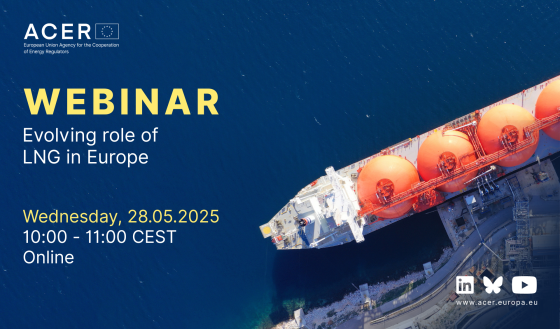was imported by the EU in 2024, keeping it the world’s largest LNG importer.
Analysis of the European LNG market developments
2025 Monitoring Report
As Europe moves away from Russian fossil fuels, liquified natural gas (LNG) is becoming an increasingly important flexible supply source. However, with a growing reliance on LNG and uncertainty around future gas demand (driven by decarbonisation goals), Europe faces a trade-off: securing higher LNG volumes to ensure stabler pricing, while maintaining the flexibility to avoid over-contracting in a changing market environment.
What trends did ACER monitoring find in 2024?
- LNG’s share of the EU’s total gas supply rose from 23% in 2020 to around 40% in 2024.
- Despite a 17% (22 bcm) drop in LNG imports compared to 2023, the EU remained the world’s largest LNG importer, with 112 bcm imported, ahead of both China and Japan.
- The US remained the world’s top LNG exporter, supplying nearly 50% of the EU’s LNG imports.
- Russian LNG exports to the EU increased by 22%, reaching 21 bcm despite sanctions. On 6 May 2025, the European Commission published its REPowerEU roadmap to fully end Russian (pipeline and LNG) gas imports by 2027. The EU must diversify its gas supply without creating new dependencies.
- The EU purchased 30 bcm of LNG on the spot market, more than any other major importer and over twice as much as China or India.
- Over 550 EU spot LNG trades with delivery were reported to ACER in 2024, totalling 45.5 bcm – 55% of which were priced below 35 EUR/MWh.
- TTF continues to be the dominant indexation benchmark, underpinning 73% of EU LNG spot transactions.
- The EU’s LNG demand outlook faces up to a 90 bcm of uncertainty between Fit for 55 and REPowerEU scenarios. Without stronger decarbonisation efforts beyond Fit for 55, the EU could face up to 30 bcm in additional LNG demand by 2030 (compared to 2024 levels).
- Europe’s high reliance on spot LNG is likely to continue through 2030 if progress towards the European Commission’s REPowerEU decarbonisation targets falls short.
- The value of Europe’s LNG import terminals extends beyond utilisation metrics. They provide winter backup, support storage refilling, diversify supply, serve landlocked regions and enhance EU market integration.
ACER recommendations
To manage the uncertainty surrounding future gas demand under the EU decarbonisation targets and to mitigate associated price volatility risks, a balanced strategy is needed – one that combines securing additional LNG supply with accelerated decarbonisation. To achieve this, EU and national policy makers, network operators and market players should focus on the following priorities:
Accelerate decarbonisation efforts to reduce gas demand: Faster deployment of renewables and improvements in energy efficiency will lower overall gas demand, reducing reliance on both spot and contracted LNG volumes. While this strengthens energy security, it also highlights the importance of demand-side decarbonisation.
- Secure additional LNG supply under flexible contract terms: Although gas demand is projected to decline over the medium-term, securing additional contracted LNG volumes would significantly reduce short-term exposure to price volatility. To avoid carbon lock-in and stay aligned with climate goals, new LNG contracts should include destination flexibility for long-term deals or be structured as short- to medium-term contracts.
- Strengthen transparency and coordination across stakeholders: Improved coordination and effective data-sharing between Member States and the European Commission will support monitoring of decarbonisation progress (together with the assistance of ACER, regulatory authorities and the European Network of Transmission System Operators for Gas (ENTSOG)). This will:
- Reduce uncertainty around future gas demand pathways, enabling better-informed LNG procurement.
- Identify early the lagging technologies (that are not developing quickly enough to meet decarbonisation goals), to push for timely policy support or adjustments.
Analysis of the European LNG market developments

Highlights
-
112 bcm
-
40%
of the EU’s total gas supply came from LNG in 2024, nearly doubling its share since 2021.
-
31 bcm
of LNG was purchased by the EU on the spot market in 2024, with exposure to spot price volatility.
Report
ACER’s 2025 Monitoring Report on the European LNG market developments:
- analyses key LNG import, pricing and trading trends in the EU in 2024;
- assesses Europe’s exposure to spot market and future demand uncertainty; and
- shows how contractual arrangements and decarbonisation progress could help mitigate price volatility risks.
Infographic
Curious about the main numbers and takeaways?
Webinar
ACER will hold a webinar to present the main findings and recommendations of this report.
When?
Wednesday 28 May 2025 at 10:00 CEST.
Additional information
- Access the underlying datasets.

